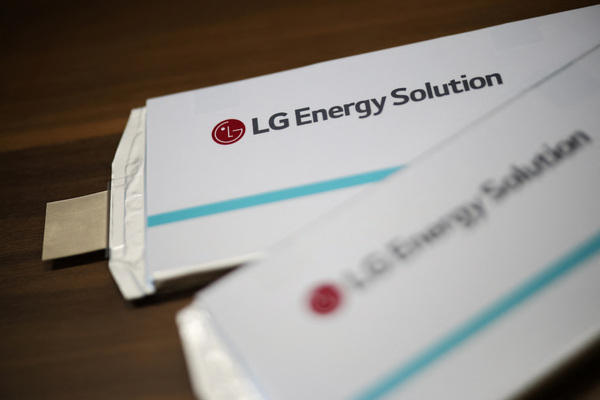Developing an effective business energy strategy

Dan Sullivan at SEFE Energy offers some practical advice to businesses looking to cut down on energy consumption and operate more efficiently
It’s no secret that there’s a growing need for businesses to pay close attention to their energy costs.
Recent data from Cornwall Insight found that a typical small business pays over £5,000 more a year in energy bills than prior to the energy crisis, with global events and a slight increase in standing charges expected to raise bills further. As we enter the more energy-intensive winter period, identifying inefficiencies can be critical.
And while cost management is a key part of energy strategy it also provides peace of mind around fundamental elements such as compliance, as well as preparing for future green developments. With many businesses holding ambitions to be more sustainable but confronted with a high barrier to entry cost-wise, paying a closer eye on energy-efficiency is often the best next step.
With the value of a strategic approach to energy management higher than ever before, let’s take a look at how facilities managers can build an effective energy strategy.
Understanding your energy consumption
The foundation of any effective energy strategy is an energy audit to help reduce any inefficient habits picked up over the years and gather insights. There are generally two types of energy audit, both with varying levels of depth to them – a preliminary energy audit, also known as a walk-through audit, or a detailed energy audit, also known as an investment grade energy audit.
The former can be simply a walk around the premises to identify energy use and performance. This will be light on real data and measurement but could unearth some useful opportunities to be more energy efficient. We would typically recommend investing the time in a more detailed audit, with the support of a consultant if needed, for a more comprehensive picture of your businesses’ performance. Often your energy provider can either support you with developing this through their own services or guide you with partner recommendations.
To lay the necessary groundwork for an effective audit, it’s useful to source feedback on existing issues. Complaints from employees about the office temperature, or a noticeable increase in energy bills, should be documented. The more aware you are of these issues before the audit, the better the outcome will be.
Once the audit is complete, you’ll then need to set energy goals that align with the short- and long-term business objectives. Whatever they are, make sure they’re realistic and achievable.
Start with the quick fixes
The audit will likely spotlight some changes to your energy usage that can be implemented simply by putting an end to bad habits. Building in these shorter-term fixes can be a good approach when building an energy strategy that is quick to implement while also incorporating a more ambitious, long-term view.
If you have a thermostat for example, it might be worth moving it to a location that’s more efficient, away from draughts, windows, and skylights. Is the fridge in the kitchen over ten years old? If so, it’s likely to be less energy efficient than new models.
Likewise, consider replacing your current light bulbs with energy-efficient options like CFL or LED bulbs – and be sure to turn them off when they’re not in use, especially overnight.
Leveraging the insights for your strategy
Once you have gathered your data and addressed the quick wins, to establish the key pillars of your long-term energy strategy, you need to quantify the potential savings from each of your identified areas. This can be a detailed process, utilising technical data such as the calorific values (the amount of energy per unit for any given fuel), costs, and carbon factors, to calculate estimated energy savings. It’s worthwhile doing though as it will allow you to prioritise which larger projects are worth investment.
It’s likely that the audit will spotlight areas where choice of technology and equipment is a prevailing factor in energy inefficiency. While this is typically the most impactful area to focus your energy strategy, we appreciate integrating too many new technologies with existing systems can be complex and costly. Ensuring interoperability between old and new technologies, can also involve substantial R&D efforts – while, for us, the long-term benefits in terms of cost and efficiency make this a worthwhile endeavour, this won’t always be an option for businesses.
More easily implemented is some kind of smart meter or automated meter reading (AMR) device which, in addition to ensuring your business is only paying for the energy it uses, can help with monitoring where you spend your money in near real-time. With this data and information to hand, you’ll be able to reduce energy more effectively in certain areas and better budget in preparation for future charges.
Get practical
Bringing the wider business and stakeholders on board with the strategy will often be an essential last step and figuring out the practicalities of budget, risks and costs, alongside the team setup to deliver the project will all be part of this.
This will require alignment with other functions in the business like HR. An employee-led energy strategy is always going to reap stronger results – when this is aligned with a wider sustainability programme and goal, it’s more likely to galvanise employees.
Considering the regulatory picture for your business is also key to legitimising your energy strategy. Some businesses, for example, will want to consider grants, keep an eye out for energy discount schemes or ensure they are meeting net zero targets set specifically for their sector or industry. For example, under the Net Zero Strategy goal public sector buildings are expected to reduce direct emissions by at least 50 percent by 2032, and by 75 percent by 2037.
Ultimately, while these initiatives do require investment and the returns may not be immediately apparent, the advantages of a well-executed energy management strategy extend beyond the balance sheet. A data-led strategy underpinned by a compelling business case is essential, one that factors in not just the direct cost-savings, but the compliance and scope for future-proofing.
Dan Sullivan is VP UK Sales at SEFE Energy
Main image courtesy of iStockPhoto.com and LeoPatrizi

Business Reporter Team
You may also like
Related Articles
Most Viewed
Winston House, 3rd Floor, Units 306-309, 2-4 Dollis Park, London, N3 1HF
23-29 Hendon Lane, London, N3 1RT
020 8349 4363
© 2025, Lyonsdown Limited. Business Reporter® is a registered trademark of Lyonsdown Ltd. VAT registration number: 830519543




